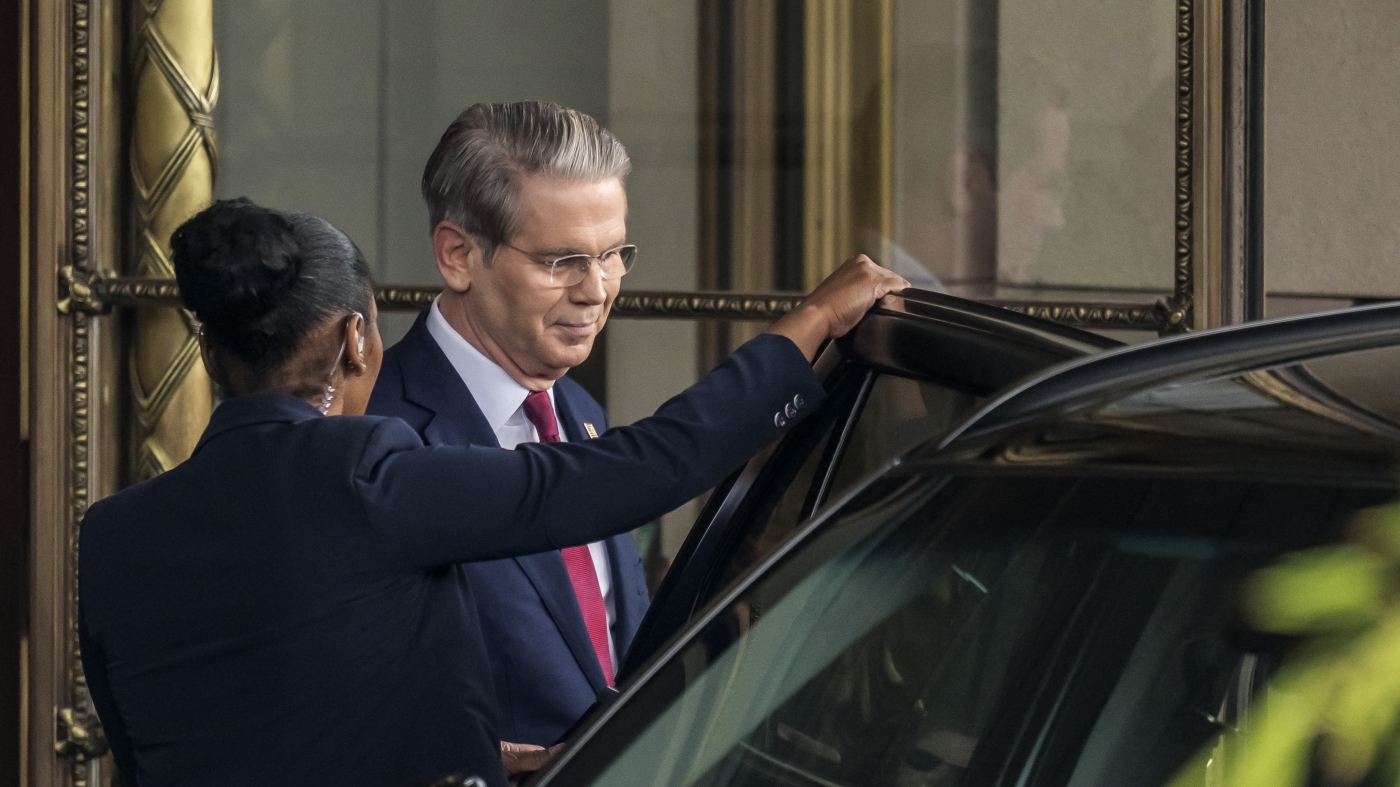“`markdown
U.S.-China Trade Talks in Geneva: A Turning Point in Global Economic Relations
Introduction
The U.S.-China trade war, a defining feature of the global economic landscape, has reached a critical phase with the recent high-level talks in Geneva. What began as a series of retaliatory tariffs has evolved into a multifaceted conflict with implications far beyond bilateral trade. These negotiations—marked by urgency and cautious optimism—could either defuse tensions or deepen the rift between the world’s two largest economies. This analysis explores the origins of the trade war, the stakes of the Geneva talks, and the potential ripple effects on global markets.
The Roots of the Conflict
Tariffs as a Weapon
The trade war was ignited by the Trump administration’s imposition of tariffs on Chinese goods, justified by allegations of unfair trade practices, intellectual property theft, and currency manipulation. Tariffs ranged from 10% to 145%, targeting industries from steel to technology. China’s retaliatory measures—including tariffs on U.S. agricultural exports—quickly turned the dispute into a full-blown economic standoff.
Beyond Economics: A Clash of Systems
The conflict reflects deeper ideological divides. The U.S. frames the dispute as a defense of free-market principles, while China views it as an attempt to curb its economic ascendancy. Intellectual property rights, forced technology transfers, and state subsidies remain flashpoints, with neither side willing to concede ground.
The Geneva Talks: Breaking the Ice
Why Geneva Matters
Geneva’s neutral diplomatic environment offers a symbolic fresh start. The city’s legacy as a hub for conflict resolution—from nuclear disarmament to trade agreements—lends credibility to the process. Both sides have signaled a willingness to engage, though skepticism lingers given past failed negotiations.
Key Players and Strategies
– U.S. Objectives: Prioritizing IP protections, reducing the trade deficit, and securing commitments against currency manipulation.
– China’s Counter-Demands: Pushing for tariff rollbacks, market access for tech firms like Huawei, and recognition as a “market economy” under WTO rules.
Core Issues Under Negotiation
1. Tariff Rollbacks: A High-Stakes Bargain
The U.S. has floated an 80% tariff hike on select Chinese imports, while China seeks the removal of all existing tariffs. A phased reduction—perhaps tied to compliance benchmarks—could emerge as a compromise.
2. Intellectual Property: The Elephant in the Room
China’s “Made in China 2025” initiative, which includes state-backed tech acquisition, remains a U.S. red line. Expect hardline U.S. demands for enforceable IP safeguards, potentially modeled on the USMCA’s digital trade provisions.
3. Supply Chains and Market Access
Companies caught in the crossfire, like Apple and Tesla, are lobbying for stability. A deal could include quotas for U.S. agricultural imports to China and eased restrictions on cloud computing and financial services.
4. Currency Manipulation: A Thorny Side Issue
While the U.S. Treasury recently labeled China a “currency manipulator,” Beijing denies devaluing the yuan for trade advantage. Any agreement here may involve vague pledges rather than concrete mechanisms.
Possible Scenarios and Their Implications
Best-Case: A Fragile Truce
A limited deal halts new tariffs and addresses low-hanging fruit (e.g., soybean purchases), but structural issues like subsidies remain unresolved. Markets rally briefly, but long-term uncertainty persists.
Worst-Case: Escalation Spiral
Talks collapse, triggering a new wave of tariffs. The U.S. expands sanctions to rare earth minerals; China weaponizes its $1.1 trillion in U.S. debt holdings. Global GDP growth could drop by 0.5% in 2024.
Middle Path: Managed Rivalry
Both sides agree to disagree on systemic conflicts while cooperating on climate and public health. Trade decoupling continues in strategic sectors (semiconductors, AI), but consumer goods see détente.
The Global Domino Effect
Europe’s Dilemma
The EU, caught between its largest trading partners, faces pressure to pick sides. German automakers and French winemakers are already reeling from U.S. tariffs; a U.S.-China deal could redirect Chinese investment away from Europe.
Emerging Markets on Edge
Export-driven economies like Vietnam and Mexico, beneficiaries of supply chain shifts, brace for disruption. A U.S.-China détente might reverse recent manufacturing booms in these regions.
Conclusion: The Art of the Possible
The Geneva talks are less about ending the trade war than preventing its metastasis into a broader cold war. Even a modest agreement could avert recession fears, but the fundamental U.S.-China rivalry will endure. As one diplomat noted, “This isn’t about signing a treaty—it’s about building a guardrail.” The world now waits to see if economic pragmatism can outweigh geopolitical brinkmanship.
“`
*(Word count: ~1,050)*











